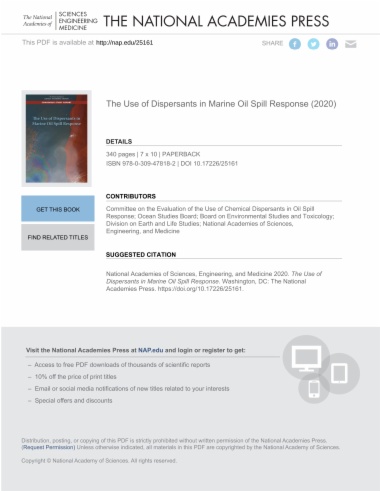

Whether the result of an oil well blowout, vessel collision or grounding, leaking pipeline, or other incident at sea, each marine oil spill will present unique circumstances and challenges. The oil type and properties, location, time of year, duration of spill, water depth, environmental conditions, affected biomes, potential human community impact, and available resources may vary significantly. Also, each spill may be governed by policy guidelines, such as those set forth in the National Response Plan, Regional Response Plans, or Area Contingency Plans. To respond effectively to the specific conditions presented during an oil spill, spill responders have used a variety of response options—including mechanical recovery of oil using skimmers and booms, in situ burning of oil, monitored natural attenuation of oil, and dispersion of oil by chemical dispersants. Because each response method has advantages and disadvantages, it is important to understand specific scenarios where a net benefit may be achieved by using a particular tool or combination of tools.
This report builds on two previous National Research Council reports on dispersant use to provide a current understanding of the state of science and to inform future marine oil spill response operations. The response to the 2010 Deepwater Horizon spill included an unprecedented use of dispersants via both surface application and subsea injection. The magnitude of the spill stimulated interest and funding for research on oil spill response, and dispersant use in particular. This study assesses the effects and efficacy of dispersants as an oil spill response tool and evaluates trade-offs associated with dispersant use.